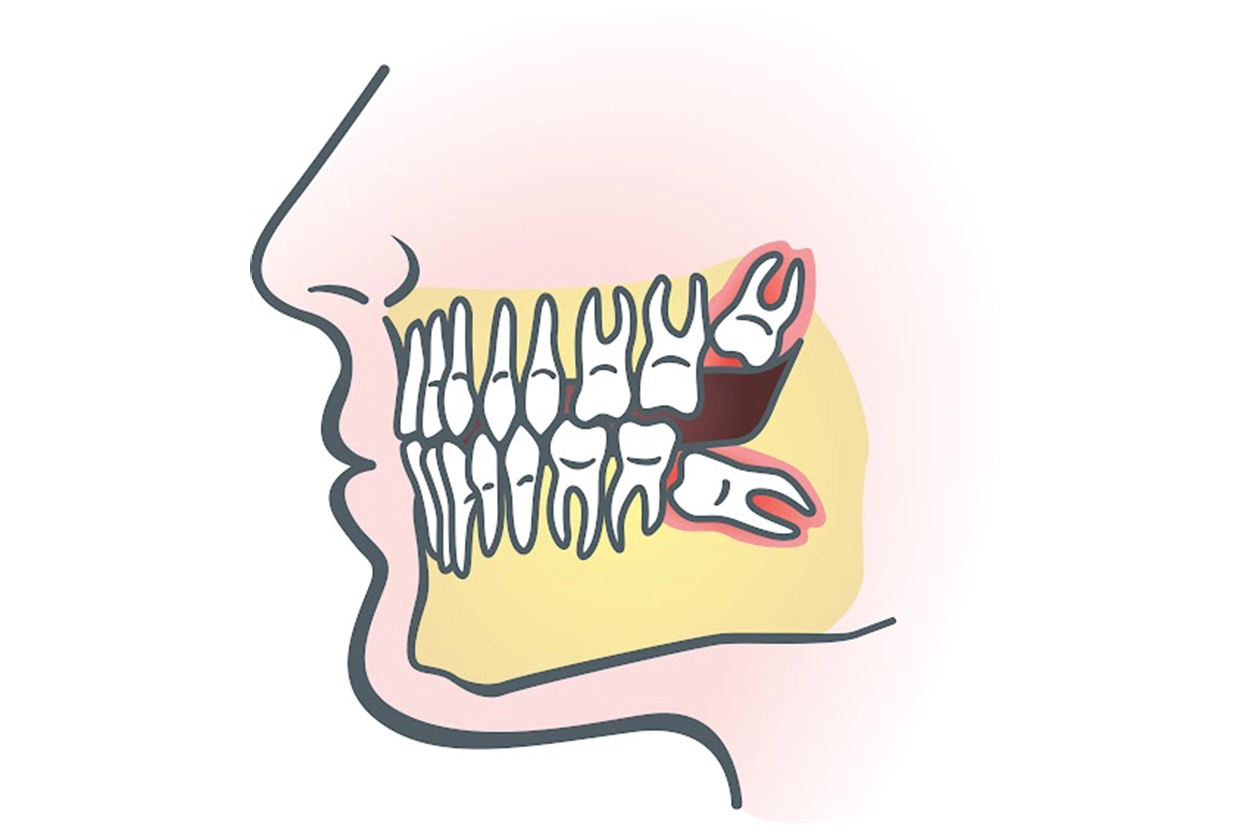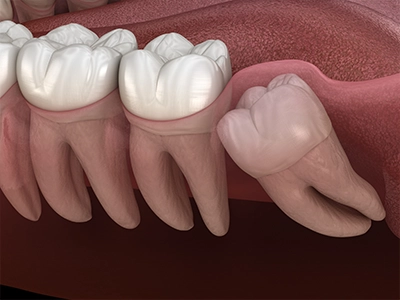Wisdom teeth, also known as the third molars, are the four teeth that are located at the back of the jaw. You have two on the upper jaw and two on the bottom jaw. Typically, these teeth erupt during the late teens or early 20’s. When these teeth are healthy and properly aligned, they can be a great asset- but most of the time, this is not the case.
In most cases, these teeth must be removed. In some cases, the dentist will recommend extraction before the teeth erupt to avoid complications with the other natural teeth. This procedure is a fairly easy one due to the advancements in dental technology. Most people recover with no issues.
However, sometimes infection after wisdom tooth removal will develop.
In some cases, the wisdom teeth can be removed with a simple extraction, while others require surgical removal. It is important to note that, as with any other surgical procedure, there is a risk of infection.
There are several signs and symptoms that indicate you may have an infection after wisdom teeth removal:
If you believe that the extraction site may be infected, it’s important to call your dentist as soon as possible. If left untreated, the infection could spread to other parts of the body. This could result in overall health complications and could ultimately be life-threatening. On the other hand, if treated promptly, these major complications can be avoided.
Treatment for infection after wisdom tooth removal depends upon the root cause of the infection as well as the severity. Typically, treatment involves:
- Thoroughly cleansing the affected area
- Using prescription or OTC antiseptic mouthwash
- Antibiotics to treat the infection
In addition to the above, there are some things you can do at home to treat wisdom teeth infection after removal:
Since salt is known to be a natural antiseptic, a saltwater rinse is helpful for treating an infection at home. Simply dissolve one teaspoon of salt into a glass of warm water. In addition to reducing bacteria, rinsing with saltwater will remove debris and break up pus around the infection to improve healing. Can be used as needed.
Hydrogen peroxide is another at-home remedy for reducing bacteria and toxins in the mouth. Combine equal parts 3% hydrogen peroxide with water. Swish and spit- do not swallow. Use as needed throughout the day. While peroxide will help reduce bacteria and eliminate infection, do not use 35% or food-grade peroxide.
A cold compress can help relieve pain and swelling associated with an infection. Most ice packs are large and cumbersome. Therefore, it's best to make your own by wrapping some ice in a clean washcloth and applying it to the affected area. You may also consider using a bag of frozen fruit or veggies, ice water, or placing an ice cube directly on the sore gum. Can be used as needed.
Clove oil has been proven to have anti-inflammatory and antibacterial properties. You can apply some clove oil to a cotton ball and place it between your cheek and the affected area. If you are unable to find clove oil, you can use a dried clove. Simply place it between your cheek and the affected area.
In addition to clove oil, other essential oils can be helpful for infection after wisdom tooth removal, including:
- Thyme oil
- Frankincense
- Oregano
While OTC medications such as aspirin, ibuprofen, or acetaminophen won’t help with the infection itself, it will help with pain and/or swelling associated with the infection. However, you should not apply the medication directly to the infection, as it could cause burns on your gums.
Baking soda is a budget-friendly way to relieve oral pain and reduce infection-causing bacteria. You can use baking soda by creating a paste to apply to the gums or by making a baking soda rinse. This can also be used as needed throughout your day.










